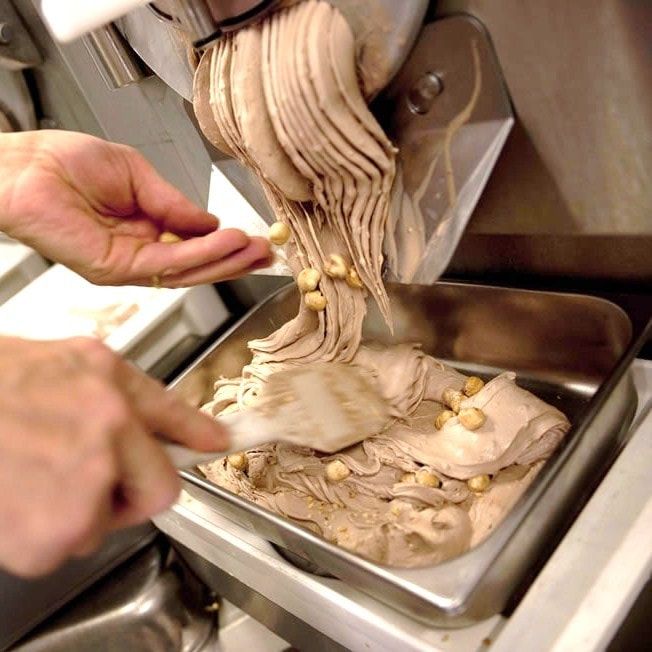|
Introduction
Gelato, the Italian word for ice cream, conjures images of vibrant flavors and a delicately smooth texture. But what is it about gelato that makes it so uniquely creamy, and what scientific principles are at work to create this tantalizing treat? This exploration not only highlights the importance of texture and creaminess in gelato but also delves into the science that underpins these qualities. In this post, we will navigate the intricate differences between gelato and traditional ice cream, the role of key ingredients, the impact of meticulous churning processes, and much more. What Makes Gelato Different from Ice Cream Although gelato and ice cream share common elements, they stand apart in several critical ways, particularly regarding ingredients and preparation methods. Differences in Ingredients Milk and Cream Ratios Gelato is distinguished by its lower cream content compared to ice cream. While ice cream often relies heavily on cream, gelato utilizes a higher ratio of milk. This not only results in fewer calories but also contributes to its intensely creamy texture by focusing less on fat and more on milk's natural thickness. Sugar Content Gelato generally contains a higher sugar content than ice cream. Sugar not only sweetens the gelato but also lowers the freezing point, thus maintaining a smoother and softer texture even at colder temperatures. To explore more about gelato varieties and preparation, you can visit [Matilda Gelato Home]. Differences in Preparation Methods Churning Process and Its Impact The churning process plays a pivotal role in determining the texture of gelato. Gelato is churned at a much slower pace than ice cream, which results in less air being incorporated. Less air translates into a denser product, amplifying its smooth, rich mouthfeel. Influence of Temperature Temperature plays a crucial role in crafting both the texture and the flavor of gelato. Gelato is served at slightly warmer temperatures than ice cream, preventing it from becoming too hard and ensuring flavors are more pronounced. For more scientific insights on gelato production, refer to [Science of Gelato Production - Science Direct]. Key Ingredients That Contribute to Creaminess Milk and its Role The quality and content of milk significantly influence the final texture of gelato. Milk's natural fat contributes to a harmonious creaminess, while also acting as a vehicle for flavor delivery. High-quality milk with an appropriate fat content ensures the gelato has a subtly rich base. Sugar, the Sweetener and Softener Sugar is indispensable in gelato, balancing sweetness and modifying texture. Different types of sugar, such as sucrose and dextrose, are used to avoid large ice crystal formations, ensuring the gelato remains silky and smooth. Stabilizers and Emulsifiers Stabilizers like guar gum and carob bean gum, along with emulsifiers, play a critical role in maintaining the stability and texture of gelato. These agents prevent the separation of ingredients and reduce the formation of ice crystals, resulting in a uniform and creamy texture. The Churning Process: How Air and Temperature Shape Gelato The Impact of Slow Churning The celebrated creaminess of gelato is partly due to its slow churning process. This technique significantly reduces the size of ice crystals and incorporates less air, resulting in a denser and creamier consistency. Ideal Churning Temperature The ideal temperature for churning gelato is crucial. Operating at slightly warmer temperatures compared to ice cream not only affects texture but also enhances the flavor profile. Understanding Viscosity: The Science of Texture How Viscosity Affects Mouthfeel Viscosity, the measure of a fluid's resistance to flow, heavily influences gelato's perceived creaminess. A higher viscosity ensures a fuller mouthfeel, integral to gelato's signature texture. Measuring and Adjusting Viscosity Producers assess viscosity using various techniques, making adjustments through ingredient manipulation or mechanical means to maintain consistency and creamy texture in gelato production. Experimenting with Flavors How Different Ingredients Affect Texture Ingredients such as fruits, nuts, and chocolates not only contribute flavor but also impact the creaminess of gelato. Adding ingredients with high-fat content, like nuts, can increase creaminess, whereas fruits might introduce more water, potentially altering texture. Finding the Perfect Balance Crafting the ultimate gelato experience demands a delicate balance between taste and texture. Achieving this involves meticulous ingredient selection and precise control over preparation methods. Discover various flavors and ingredients at [Flavours at Matilda Gelato]. The Role of Storage and Serving Conditions How Storage Impacts Gelato Creaminess To preserve gelato's creaminess, optimal storage conditions are imperative. Gelato is best kept at a temperature just above freezing to avoid forming large ice crystals, which would compromise its smooth texture. Proper Serving Techniques Serving gelato at the correct temperature ensures it retains its creamy texture. Ideally, gelato should be served slightly warmer than ice cream to allow the full spectrum of its flavors to shine through. For scientific explanations on ice cream chemistry, refer to [Top Scientists Explain Ice Cream Chemistry - American Chemical Society]. Conclusion Understanding the science behind gelato's creaminess allows for a deeper appreciation of this delightful dessert. From the nuances of ingredient selection and preparation techniques to storage and serving practices, each facet plays a vital role in crafting the perfect gelato. We encourage you, the reader, to experiment with homemade gelato, armed with this scientific insight to create your creamy masterpiece. Additional Resources - Read more on [Matilda the Art of Gelato] - For more inquiries, [Contact Us]
0 Comments
Leave a Reply. |
AuthorMatilda The Art Of Gelato Archives
December 2025
Categories |
Site powered by Weebly. Managed by CheaperDomains.com.au


 RSS Feed
RSS Feed